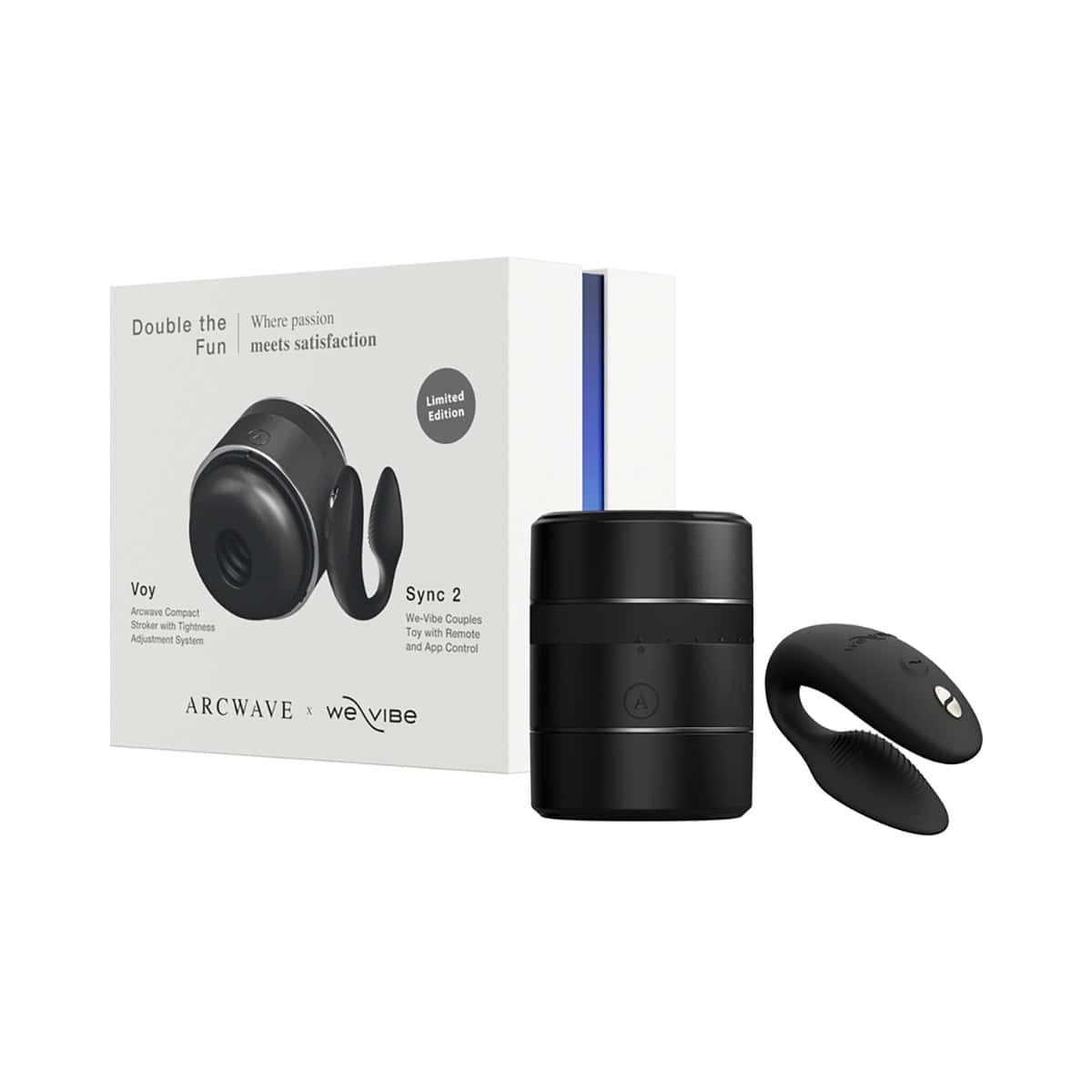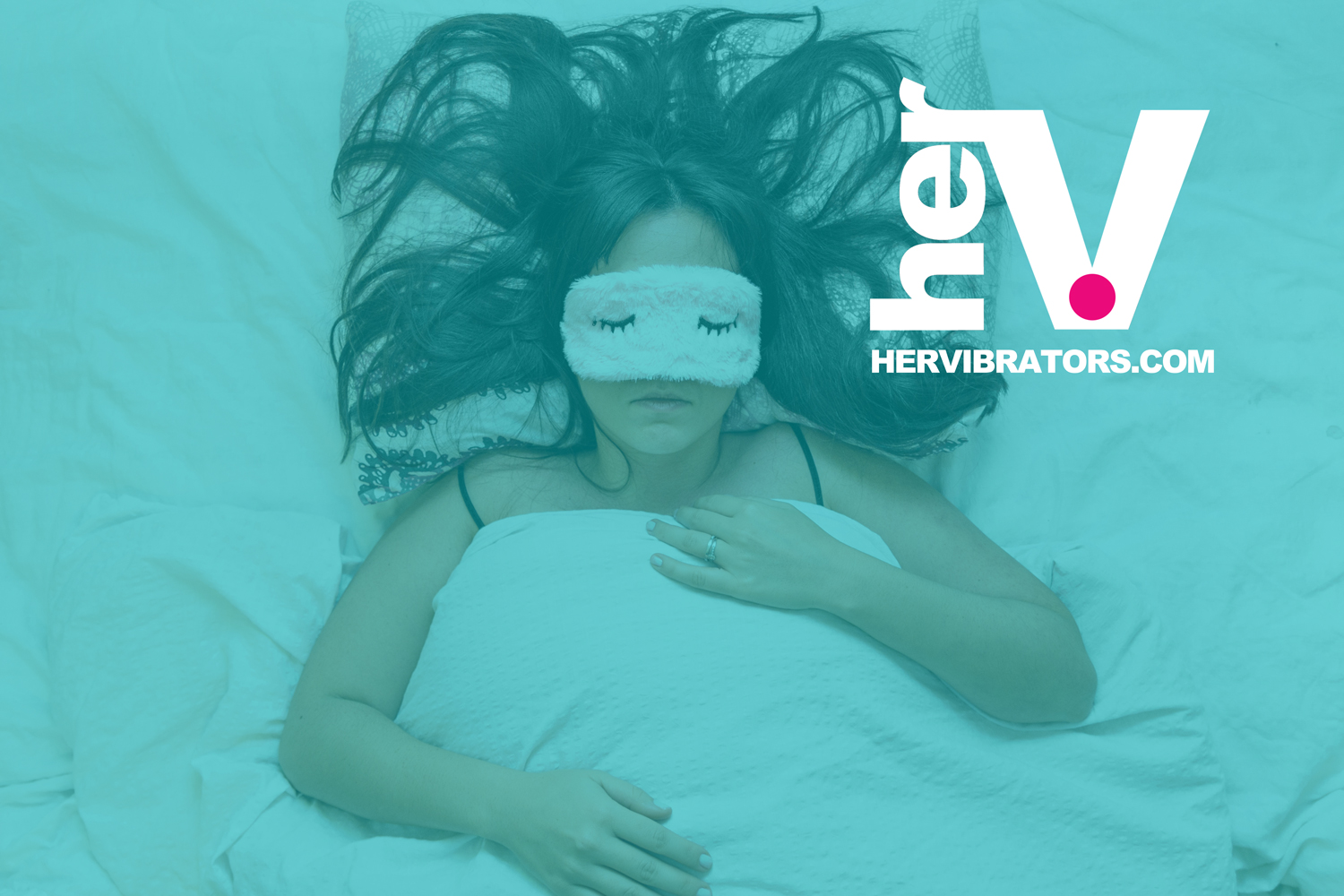Sleep is one of the most critical pillars of overall health and well‐being. In today’s fast‐paced world, many individuals struggle to obtain the quality and quantity of sleep they need. While traditional sleep hygiene recommendations—such as maintaining a consistent sleep schedule, creating a calm sleeping environment, and avoiding stimulants before bedtime—are well known, emerging evidence suggests that incorporating orgasm into your bedtime routine may further enhance your sleep quality. This article explores what sleep hygiene is, why it matters, and how adding the practice of achieving orgasm (whether through partnered sex or masturbation) can be a valuable component of a holistic sleep hygiene routine.
Introduction
In recent years, conversations about sleep have expanded beyond the classic advice of “get 7–8 hours a night” to include a range of lifestyle practices aimed at optimizing sleep quality. Among these practices, sleep hygiene—a set of behavioral and environmental guidelines designed to improve sleep—has received widespread attention from both researchers and healthcare professionals. Yet, despite the proliferation of sleep-related advice, one element has been relatively overlooked in mainstream recommendations: the potential role of orgasm in facilitating sleep.
Many people have noted anecdotally that after an orgasm, they feel relaxed, drowsy, and ready to drift off into a deep sleep. This phenomenon is no mere coincidence. The interplay between the neurochemical and hormonal changes that occur during orgasm and our body’s natural sleep mechanisms suggests that achieving orgasm may be an effective, natural sleep aid. In this article, we will delve into the science behind sleep hygiene and explore how adding orgasm to your nightly routine can enhance your sleep quality.
Understanding Sleep Hygiene
What Is Sleep Hygiene?
Sleep hygiene refers to a series of habits, behaviors, and environmental conditions that promote consistent, uninterrupted, and high-quality sleep. Originally developed in the late 1970s as a nonpharmacological approach to treating mild to moderate insomnia, sleep hygiene encompasses a wide range of recommendations. These include maintaining a consistent sleep schedule, avoiding stimulants like caffeine and nicotine in the hours before bedtime, minimizing exposure to bright lights (especially blue light from electronic devices), and ensuring that the sleep environment is comfortable, quiet, and dark.
For those who might be unfamiliar, think of sleep hygiene as the foundation of a good night’s rest—a personalized “blueprint” that helps signal to your body that it’s time to wind down and prepare for sleep. Whether you are struggling with chronic insomnia or simply looking to optimize your nightly rest, cultivating good sleep hygiene practices can lead to numerous physical and mental health benefits.
The Importance of Sleep Hygiene
Good sleep hygiene is crucial because sleep is not just a period of rest; it is a vital process during which the body repairs itself, the brain consolidates memories, and emotional balance is restored. Research has linked good sleep hygiene to:
- Enhanced immune function: Quality sleep helps your body fight off infections.
- Improved mood and cognitive function: Consistent, restorative sleep can reduce stress, boost mood, and improve concentration.
- Better metabolic health: Sufficient sleep is associated with healthy weight regulation and a lower risk of conditions such as diabetes and heart disease.
- Overall well-being: High-quality sleep is correlated with increased energy, improved performance at work or school, and better relationships.
Unfortunately, poor sleep hygiene practices—such as irregular sleep schedules, excessive screen time before bed, and late consumption of stimulants—can lead to fragmented sleep, increased time to fall asleep, and overall poorer sleep quality. For these reasons, sleep hygiene forms the backbone of many behavioral interventions for insomnia and is a key public health strategy for improving population health.
The Role of Orgasm in Sleep
Why Consider Orgasm as Part of a Sleep Hygiene Routine?
When most people think of sleep hygiene, they might picture a dark, quiet room and a strict bedtime routine. However, emerging evidence indicates that there is another natural process that can significantly enhance your sleep: orgasm. Whether achieved through partnered sex or masturbation, orgasm triggers a cascade of physiological and psychological responses that promote relaxation and facilitate a smoother transition into sleep.
The idea of adding orgasm to your sleep hygiene routine is rooted in the observation that many individuals report falling asleep faster and experiencing deeper, more restorative sleep after climax. While this concept might seem unconventional to some, it aligns with our growing understanding of the neurochemical mechanisms that underlie both sexual pleasure and sleep.
The Hormonal Symphony Behind Orgasm and Sleep
One of the most compelling reasons to integrate orgasm into your sleep routine is the hormonal cascade it initiates. Let’s explore the key hormones and neurochemicals involved:
Oxytocin
Often referred to as the “love hormone,” oxytocin is released in large amounts during orgasm. Oxytocin promotes feelings of warmth, closeness, and relaxation. Research suggests that elevated levels of oxytocin help reduce stress and anxiety—two major culprits of sleep disruption. By lowering cortisol levels (the body’s primary stress hormone), oxytocin sets the stage for a calmer mind and body, making it easier to fall asleep.
For example, a study published on Health Shots highlighted that oxytocin released during orgasm can improve sleep quality by inducing relaxation and reducing anxiety.
Prolactin
Prolactin is another hormone that spikes following orgasm. It is associated with the feeling of satisfaction and relaxation after climax. Elevated prolactin levels contribute to the drowsiness many people experience post-orgasm, effectively signaling to the brain that it’s time to wind down and rest. Studies have shown that prolactin not only promotes a sense of well-being but also encourages deep, restorative sleep.
Endorphins
Endorphins, the body’s natural painkillers, are also released during orgasm. These “feel-good” chemicals help alleviate pain and discomfort by binding to opioid receptors in the brain. Endorphins provide a euphoric boost that can ease tension and create a sense of calm, further enhancing the body’s readiness for sleep.
Serotonin and Dopamine
Orgasms trigger the release of serotonin and dopamine, neurotransmitters involved in mood regulation. Serotonin, in particular, is critical for initiating the production of melatonin—the hormone responsible for regulating sleep cycles. By enhancing serotonin levels, orgasms may help synchronize your body’s internal clock, ensuring a smoother transition into sleep.
BuzzFeed News reported that the surge of serotonin and dopamine post-orgasm not only elevates mood but also improves sleep-wake regulation, creating the ideal conditions for falling asleep.
How Orgasm Enhances Sleep: The Science Explained
Physiological Relaxation
When you experience an orgasm, your body undergoes a series of intense muscular contractions. These contractions are immediately followed by a phase of muscle relaxation. This process is similar in some ways to the effects of progressive muscle relaxation techniques used in cognitive-behavioral therapy for insomnia (CBT-I). By releasing built-up tension from the muscles, an orgasm can effectively “reset” your body’s stress levels and prepare your muscles for a state of deep relaxation—a key component of quality sleep.
Improved Circulation and Energy Redistribution
During sexual arousal and orgasm, blood flow increases throughout the body, delivering oxygen and nutrients to vital organs and muscles. This enhanced circulation not only supports physical recovery but also contributes to a feeling of overall relaxation. As your body redistributes energy following the peak of sexual excitement, you may find that the natural drop in body temperature (a known sleep-promoting factor) is more pronounced, leading to improved sleep onset and quality.
Enhanced Sleep Architecture
Sleep architecture refers to the structure of the different sleep stages—ranging from light sleep to deep non-REM sleep and REM sleep. Research indicates that the hormonal changes following orgasm may extend the duration of slow-wave sleep (SWS), the deep, restorative phase of sleep. A longer period of SWS is associated with better immune function, improved memory consolidation, and greater overall physical recovery.
Moreover, the combination of reduced cortisol and increased prolactin after orgasm may result in fewer awakenings during the night. This means that not only do you fall asleep faster, but your sleep is also less fragmented, allowing for a more continuous and restorative sleep cycle.
Psychological Benefits
In addition to the physiological benefits, orgasms also offer significant psychological advantages. The mood-boosting effects of the hormones released during orgasm can alleviate anxiety and depressive symptoms, both of which are known to interfere with sleep. By improving your mood and reducing stress, orgasms help set a positive mental state that is conducive to falling asleep.
Many individuals report a sense of “emotional catharsis” after an orgasm, which can be especially beneficial for those who struggle with racing thoughts or nighttime rumination. This emotional release can quiet the mind and make it easier to transition into sleep without the burden of lingering stress or anxiety.

Shop Arcwave from We-Vibe
Integrating Orgasm into Your Sleep Hygiene Routine
A Holistic Approach to Sleep Hygiene
While traditional sleep hygiene focuses on behavioral and environmental modifications, integrating orgasm into your routine adds an extra layer of physiological and psychological support. The goal is not to rely solely on sexual activity as a sleep aid but to combine it with other healthy sleep practices to create a synergistic effect.
Core Components of Traditional Sleep Hygiene
Before exploring how orgasm fits into the equation, it’s important to review the key elements of good sleep hygiene:
- Consistent Sleep Schedule: Going to bed and waking up at the same time every day reinforces your body’s internal clock.
- Optimal Sleep Environment: A dark, quiet, and cool bedroom promotes uninterrupted sleep.
- Pre-Sleep Wind Down: Engaging in relaxing activities—such as reading, meditation, or gentle stretching—helps signal to your body that it’s time to sleep.
- Avoidance of Stimulants: Limiting caffeine, nicotine, and heavy meals before bedtime minimizes disruptions to sleep.
These practices lay the groundwork for a robust sleep hygiene routine. By adding orgasm into the mix, you harness additional hormonal and psychological benefits that can further ease the transition into sleep.
How to Add Orgasm to Your Routine
Timing Is Everything
The timing of sexual activity is crucial when considering it as a sleep aid. For maximum benefit, it is recommended to engage in sexual activity—whether with a partner or through self-stimulation—shortly before bedtime. The release of oxytocin, prolactin, and endorphins immediately after orgasm creates a natural lull that can make it easier to fall asleep.
Integrate orgasm into your routine by considering it as part of your “wind-down” ritual. For instance, if you usually start your pre-sleep routine 30–60 minutes before bed, consider adding sexual activity into that period. Over time, your body may begin to associate orgasm with sleep readiness, reinforcing the sleep hygiene cycle.
Creating a Relaxing Setting
Just as you would optimize your bedroom for sleep by keeping it cool, dark, and quiet, consider the setting in which you engage in sexual activity. A comfortable, private, and stress-free environment is essential to ensure that the experience is as relaxing as possible. Dim the lights, eliminate distractions (such as smartphones or televisions), and consider soft music or ambient sounds to set the mood.
When sharing this experience with a partner, open communication is key. Discuss what helps both of you relax and enjoy the moment fully. If you’re engaging in solo sexual activity, experiment with different stimuli—such as erotica, ambient lighting, or scented candles—to find the combination that best enhances your relaxation and pleasure.
Consistency and Routine
The concept of habit formation is central to sleep hygiene. Just as consistency in sleep schedule helps regulate your circadian rhythm, incorporating orgasm at a consistent time each night may create a conditioned response. Over time, your brain could begin to associate the sexual climax with the onset of sleep, much like how a warm bath or a cup of caffeine-free tea signals bedtime for some people.
Building consistency into your routine means not only engaging in sexual activity regularly but also ensuring that it is a stress-free, enjoyable part of your evening ritual. Avoid viewing orgasm as an obligation; instead, let it be a natural extension of your personal care routine that complements other sleep hygiene practices.

Shop LELO Hugo Ocean Blue – Something for Him, too!
Establishing Healthy Routines for Orgasm
Understanding Your Own Body
One of the most important aspects of integrating orgasm into your sleep routine is understanding your unique sexual response. Each person is different, and what works for one individual may not work for another. Some people may find that a brief session of self-stimulation is sufficient to trigger the desired hormonal cascade, while others may prefer partnered sexual activity.
Take time to explore your body and understand what types of stimulation lead to the most satisfying and relaxing climax. Self-exploration not only enhances your sexual self-awareness but also empowers you to communicate your needs more effectively—whether you are engaging in solo play or with a partner.
Communication Is Key
For those who have a partner, open communication about sexual needs, preferences, and timing can greatly enhance the experience. Discussing your desire to incorporate orgasm as part of your sleep routine can be a positive conversation that deepens intimacy and mutual understanding.
Effective communication can help set the stage for a pleasurable, stress-free sexual encounter that benefits both partners. When both individuals feel relaxed and connected, the resultant hormonal changes are likely to be more pronounced, leading to a greater potential for improved sleep quality.
Balancing Frequency and Quality
It is important to note that while orgasms can promote relaxation and sleep, balance is key. Overemphasizing sexual activity solely as a sleep aid might lead to performance anxiety or an unhealthy preoccupation with achieving climax. Instead, aim for a balanced approach where orgasm is one element of a broader sleep hygiene strategy.
For example, if you find that sexual activity on most nights leads to improved sleep but on some nights the pressure to perform negatively impacts your mood, consider adjusting the frequency or timing. The goal is to cultivate a positive association between sexual pleasure and sleep without introducing additional stress or anxiety.
Incorporating Mindfulness
Mindfulness practices have been shown to improve both sexual satisfaction and sleep quality. By incorporating mindfulness into your sexual routine, you can enhance your overall experience and ensure that your focus remains on the pleasure and relaxation that orgasm brings.
Consider setting aside a few minutes before engaging in sexual activity to engage in mindfulness or deep breathing exercises. This practice can help you stay present and attuned to your body’s sensations, making the eventual orgasm more satisfying and the subsequent relaxation more profound.
A study by BuzzFeed News highlighted how mindfulness techniques, when combined with sexual activity, can enhance the release of oxytocin and reduce cortisol, further improving sleep quality.

SHOP Honey Play Box Joi Thrust 2 AppControlled Thrusting Vibrator & Clit Licker
Practical Tips for Incorporating Orgasm into Your Sleep Schedule
Here are some actionable strategies to help you seamlessly integrate orgasm into your sleep hygiene routine:
1. Designate a Specific “Wind-Down” Time
Set aside 30–60 minutes before your intended bedtime as a dedicated period for winding down. During this time, minimize distractions and focus on activities that promote relaxation. If you choose to include sexual activity during this period, allow yourself the freedom to engage without pressure. The goal is to make it a natural and enjoyable part of your evening.
2. Optimize Your Environment
Ensure that your bedroom or the space where you engage in sexual activity is conducive to relaxation:
- Lighting: Use dim, warm lighting or candles to create a calming ambiance.
- Temperature: Keep the room at a comfortable, cool temperature (generally around 60–67°F or 15–19°C).
- Sound: Consider playing soft, ambient music or white noise to mask disruptive sounds.
- Privacy: Choose a space where you feel secure and free from interruptions.
3. Experiment with Different Approaches
Not everyone responds the same way to sexual stimulation. Experiment with various methods—such as different forms of touch, the use of lubricants or sex toys, or different types of erotic content—to discover what best promotes relaxation and ultimately aids in sleep. Maintain a flexible mindset and adjust your routine based on your experiences.
4. Combine with Other Relaxation Techniques
Integrate other relaxation techniques into your routine to enhance the overall effect. Consider practices such as:
- Deep Breathing Exercises: Slow, deliberate breathing can help lower your heart rate and promote relaxation.
- Progressive Muscle Relaxation: Tense and then release each muscle group to alleviate tension.
- Meditation: A short meditation session can clear your mind and prepare you for sleep.
- Gentle Stretching: Light stretching exercises can relieve muscle tightness and improve circulation.
By combining these practices with sexual activity, you create a multi-pronged approach to relaxation that reinforces healthy sleep hygiene.
5. Maintain a Consistent Schedule
Just as consistency is crucial for overall sleep hygiene, try to incorporate sexual activity at a similar time each night. A regular schedule can help your body form a conditioned response, making it easier to transition into sleep after experiencing orgasm. Over time, the repetition of this pattern may strengthen the association between sexual climax and sleep readiness.
6. Keep an Open Mind
It is essential to recognize that while many individuals experience improved sleep after orgasm, not everyone will have the same response. Be open to adjusting your routine if you find that sexual activity does not yield the desired sleep benefits on certain nights. It’s also important to remember that a holistic sleep hygiene routine includes several components—orgasm is a valuable addition, but it works best when combined with other healthy sleep practices.
Addressing Common Concerns and Misconceptions
Concern: “Will Relying on Orgasm as a Sleep Aid Become a Crutch?”
One common concern is that incorporating orgasm into your sleep hygiene routine might lead to a dependency where you feel unable to sleep without it. The key is balance. When orgasm is integrated as one part of a comprehensive sleep hygiene strategy, it serves as an enhancer rather than a crutch. The primary goal remains to maintain overall healthy sleep habits. Orgasm should complement—not replace—other proven strategies such as maintaining a regular sleep schedule, creating a conducive sleep environment, and managing stress through mindfulness and relaxation techniques.
Concern: “What If I Don’t Orgasm Easily or Consistently?”
It’s important to recognize that sexual response is highly individual. Some people may find it challenging to reach orgasm due to a variety of factors including stress, hormonal fluctuations, or underlying health issues. In such cases, remember that any sexual activity can still offer some benefits. The act of sexual arousal itself can release calming hormones like oxytocin and endorphins, even if climax isn’t achieved. If you struggle with orgasm, consider exploring methods to improve your sexual experience—this might include self-exploration, trying different forms of stimulation, or even consulting with a sex therapist. The goal is to create a relaxing and enjoyable experience that contributes to your overall sleep hygiene.
Misconception: “Sex and Sleep Are Unrelated Topics”
For a long time, discussions about sleep have focused on environmental factors, lifestyle habits, and medical interventions. The link between sexual activity—especially orgasm—and sleep quality has historically been sidelined due to social taboos and a lack of rigorous research. However, recent studies have begun to challenge this notion, providing evidence that the physiological and psychological effects of orgasm can play a significant role in promoting better sleep. By breaking down these barriers and integrating a more holistic view of health, we can appreciate that sex and sleep are interconnected components of overall well-being.
Misconception: “Only Partnered Sex Can Yield Sleep Benefits”
It is a common belief that only sex with a partner can lead to the sleep-enhancing benefits of orgasm. However, research indicates that solo sexual activity (masturbation) can produce similar hormonal changes and feelings of relaxation. Whether you choose to engage in partnered sex or masturbation, the key factor is the experience of orgasm and the subsequent release of beneficial hormones. Both forms of sexual activity can be effectively incorporated into a sleep hygiene routine.
The Bigger Picture: Sleep Hygiene, Orgasm, and Overall Health
Integrating orgasm into your sleep hygiene routine is not about adding another item to a checklist; it is about adopting a holistic approach to well-being. Sleep, sexual health, and overall mental and physical health are deeply interconnected. Quality sleep promotes better mood regulation, cognitive function, and physical recovery—factors that in turn can enhance your sexual health and satisfaction. Conversely, a fulfilling sex life, including regular orgasms, can reduce stress, improve mood, and contribute to better sleep quality.
The Synergistic Effects
When you combine traditional sleep hygiene practices with the relaxation and hormonal benefits of orgasm, the effects can be synergistic. For instance, if you maintain a consistent sleep schedule, create a comfortable sleep environment, and wind down with relaxation techniques, adding an orgasm to this routine can amplify these benefits. The additional release of oxytocin, prolactin, endorphins, serotonin, and dopamine creates a more profound state of relaxation and reduces stress levels further than traditional methods alone.
This synergy means that the cumulative effect of multiple healthy behaviors can lead to significantly better sleep. It’s not that orgasm is a magic bullet; rather, it is an effective component of a multi-faceted approach to sleep hygiene.
Bridging the Gap Between Sexual Health and Sleep Medicine
For many years, discussions about sleep health and sexual health existed in separate silos. However, recent research and evolving public attitudes have begun to bridge this gap. Medical experts now recognize that sexual activity—particularly achieving orgasm—can have meaningful effects on sleep patterns. As the stigma around discussing sexual health diminishes, integrating these practices into mainstream sleep hygiene recommendations may lead to innovative, nonpharmacological approaches to treating insomnia and other sleep disturbances.
As noted by a review in Sleep Medicine Reviews, while the evidence for traditional sleep hygiene as a stand-alone therapy for insomnia remains mixed, combining multiple strategies—including those addressing sexual health—could lead to improved outcomes.
Future Directions and Research Needs
While the idea of incorporating orgasm into a sleep hygiene routine is promising, more rigorous research is needed to fully understand the long-term effects and optimal strategies for doing so. Future studies should aim to address several key areas:
1. Standardizing the Protocol
There is a need for standardized protocols that outline how and when sexual activity should be incorporated into sleep routines. Future research could compare different timings (e.g., 30 minutes vs. 60 minutes before bed), durations, and types of sexual activity (partnered vs. solo) to determine the most effective approach.
2. Longitudinal Studies
Most existing studies have relied on self-reported data or short-term observations. Longitudinal studies that track sleep quality, hormonal changes, and overall well-being over extended periods will help establish causality and determine whether the benefits of orgasm as a sleep aid are sustainable.
3. Individual Differences
Research should also focus on the variability in individual responses to sexual activity. Factors such as age, gender, hormonal status, stress levels, and overall health may influence how orgasm affects sleep. A personalized approach to integrating orgasm into sleep hygiene could be developed based on these individual differences.
4. Integration with Other Therapies
Understanding how the benefits of orgasm interact with other components of cognitive behavioral therapy for insomnia (CBT-I) is another important area for investigation. Combining traditional sleep hygiene, mindfulness practices, and sexual health strategies may offer a comprehensive treatment for chronic insomnia.
5. Overcoming Social Taboos
Despite increasing openness, social taboos still surround discussions of sex and masturbation. Future research and public health initiatives need to address these cultural barriers to ensure that accurate, evidence-based information about the sleep benefits of orgasm is accessible to everyone.
Conclusion
Incorporating orgasm into your sleep hygiene routine represents a promising, natural strategy to improve sleep quality and overall well-being. By understanding and harnessing the physiological and psychological benefits of orgasm—including the release of oxytocin, prolactin, endorphins, serotonin, and dopamine—you can create a more robust and effective sleep routine. When combined with traditional sleep hygiene practices, orgasm can help reduce stress, ease muscle tension, and promote deeper, more restorative sleep.
To summarize, here are the key takeaways:
- Sleep hygiene involves creating consistent, healthy habits and an optimal sleep environment that encourage high-quality, uninterrupted sleep.
- Orgasm, whether achieved through partnered sex or masturbation, triggers a complex hormonal cascade that promotes relaxation and reduces stress.
- The physiological effects of orgasm—such as muscle relaxation, improved circulation, and enhanced sleep architecture—complement traditional sleep hygiene practices.
- Integrating orgasm into your nightly routine should be done mindfully, with attention to timing, environment, and personal comfort.
- A holistic approach to sleep and sexual health can yield synergistic benefits, improving mood, cognitive function, and overall physical health.
- While current evidence is promising, further research is needed to standardize protocols and understand individual differences in response to this sleep-enhancing strategy.
In a world where many of us struggle with stress, anxiety, and sleep disturbances, finding natural, nonpharmacological ways to improve sleep is essential. Adding orgasm to your sleep hygiene routine might just be the extra boost your body needs to relax and achieve a better night’s rest.
As you experiment with integrating sexual activity into your pre-sleep ritual, remember that the goal is not to create pressure or expectation but to enhance your overall relaxation and enjoyment. Whether you are exploring solo play or sharing intimate moments with a partner, let the experience be guided by pleasure, self-care, and the desire for a restful sleep.
By fostering open communication about sexual health and embracing a more comprehensive view of well-being, we can break down the outdated silos that separate sleep medicine from sexual health. This integrated approach not only promotes better sleep hygiene but also contributes to improved mental and physical health, paving the way for a more balanced and fulfilling life.
For those ready to take the next step, consider the following action points:
- Evaluate Your Current Sleep Hygiene: Take note of your current sleep routine, environment, and any challenges you face in falling or staying asleep. Keep a sleep diary for at least one week.
- Incorporate Relaxation Techniques: Alongside other relaxation methods, include a period for sexual self-care—whether through masturbation or partnered intimacy—about 30–60 minutes before bedtime.
- Create a Conducive Environment: Ensure your bedroom is optimized for both sleep and relaxation. Dim the lights, minimize noise, and create a private, stress-free space where you feel comfortable exploring sexual pleasure.
- Practice Mindfulness: Engage in mindfulness or deep breathing exercises before and during sexual activity to maximize the release of relaxation-promoting hormones.
- Maintain Consistency: Strive for consistency not only in your sleep schedule but also in the timing of your sexual activity. A regular routine helps condition your body to associate orgasm with sleep readiness.
- Monitor and Adjust: Keep track of how incorporating orgasm affects your sleep quality. If you notice improvements, continue with the practice; if not, adjust the timing or method and consider discussing your experiences with a healthcare professional or sex therapist.
- Communicate with Your Partner: If you are in a relationship, discuss your intentions and experiences openly. Sharing your goals can enhance intimacy and ensure that both partners benefit from a mutually satisfying routine.
In conclusion, the addition of orgasm to your sleep hygiene routine offers an exciting and natural way to improve sleep quality. It leverages the powerful, innate mechanisms of your body to reduce stress, promote relaxation, and foster a deeper connection between mind and body. When viewed as one piece of the broader puzzle of healthy sleep practices, orgasm can be a transformative element that helps bridge the gap between physical pleasure and restorative sleep.
Embracing this integrative approach means not only enhancing your nightly rest but also rethinking how various aspects of self-care—ranging from nutrition and exercise to mental well-being and sexual health—are interconnected. By recognizing and utilizing the full spectrum of natural processes available to us, we can create a sleep hygiene routine that truly supports overall health and quality of life.
Remember, the journey to better sleep is a personal one. What works for one person might need adjustment for another. Experiment with different methods, stay open to change, and most importantly, prioritize your well-being. After all, a good night’s sleep is the foundation upon which we build a healthier, happier, and more energetic life.
Sleep well, dream big, and enjoy every moment of pleasure along the way.
Sources and Further Reading:
- healthshots.com Health Shots article on orgasms and sleep benefits.
- buzzfeednews.com BuzzFeed News report on orgasms’ effect on sleep.
- pmc.ncbi.nlm.nih.gov Review in Sleep Medicine Reviews on sleep hygiene in public health.
- Additional resources on sleep hygiene from Sleep Foundation, WebMD, and CDC.
This comprehensive article is designed to be an in-depth resource on why and how adding orgasm to your sleep hygiene routine can be beneficial, blending traditional sleep practices with natural sexual health strategies.
















